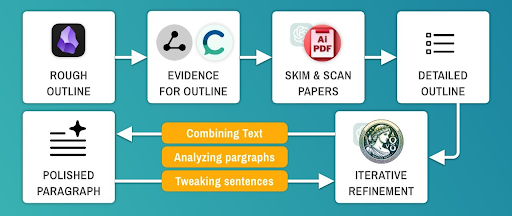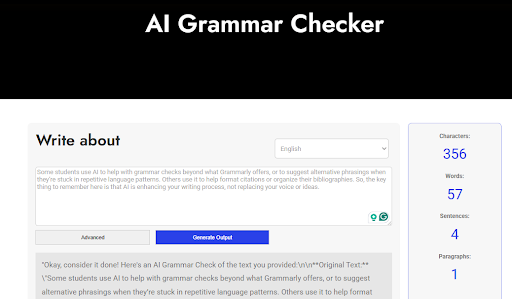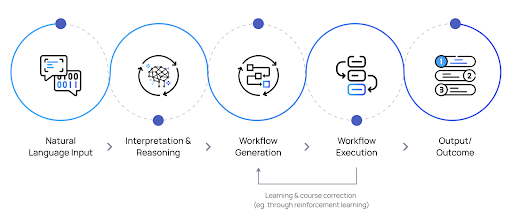AI writing assistants like ChatGPT, Claude, and Jasper are popping up in students’ workflows. A global survey recently found that 86% of U.S. students have used AI for school-related tasks.
Understandably, this raises critical ethical questions. For example, if a student uses AI to generate an entire essay, is that considered collaboration or academic dishonesty? The answer isn’t as black-and-white as your professors may want it to be.
I’ve spent countless hours researching AI tools in academic contexts. What I’ve learned is that the “Should I or shouldn’t I?” question is missing the point entirely.
The better question is, “How do you use these tools responsibly while still doing work that’s genuinely yours?”
So, grab your favorite study beverage and settle in. The article dives into the real pros and cons of AI academic writing.
The Different Uses of AI for Academic Writing
Students are using generative AI models in a variety of ways throughout the academic writing process.
But when most people think of “AI and academic writing,” they immediately jump to “cheating” or “a robot doing my homework.”
The truth is, the ethics of using AI depend on how you use it. Understanding these distinctions is crucial because your professor’s reaction to “I used AI to brainstorm ideas” versus “I used AI to write my entire research paper” is going to be… well, dramatically different.

Here are some of the most common uses of AI in academic writing:
Research, Brainstorming, and Outlining
Students often use AI to generate ideas for paper topics, thesis statements, or basic outlines to get started when they’re stuck. This is where most students find AI genuinely helpful without crossing ethical lines. Many also explore quantitative research topics using AI to brainstorm structured questions and datasets that can guide academic projects.
Let’s consider an example. When writing a historical article on figures like Captain Ronald Speirs—known for his leadership in Easy Company during WWII—AI tools can offer valuable support, but also come with important limitations.
On the pro side, AI can help organize timelines, suggest structure, summarize dense military records, and even flag inconsistencies, speeding up the drafting process. It can also assist in rephrasing content for clarity or tone, especially when balancing military detail with narrative flow.
However, the cons include potential factual inaccuracies, oversimplification of complex events, and a lack of nuance in interpreting historical sources, particularly for a subject as layered and debated as Speirs. Relying too heavily on AI can lead to a polished but shallow account that misses the historical context and ethical considerations. For academically rigorous writing, AI should support academic research and editing, not replace critical thinking and source analysis.
Writing Process Enhancement
Things can get a bit more nuanced here. Artificial intelligence can be incredibly useful for the mechanics of writing without actually writing for you. Need help structuring an argument? AI tools can suggest logical flow patterns. Struggling with transitions between paragraphs? It can offer connecting phrases. Wrestling with how to introduce a quote smoothly? AI has plenty of integration strategies.
Some students use AI to help with grammar checks beyond what Grammarly offers, or to suggest alternative phrasings when they’re stuck in repetitive language patterns. Others use it to help format citations or organize their bibliographies. So, the key thing to remember here is that AI is enhancing your writing process, not replacing your voice or ideas.

Content Generation
And then I get to the big one: using AI to generate text that ends up in your final paper. This ranges from having AI to write complete sections (definitely problematic in most academic contexts) to asking it to help you articulate a point you’ve developed in your head but can’t quite get onto paper.
Some students use AI to create first drafts that they then heavily revise and personalize. Others might ask AI to help them rewrite a clunky sentence or paragraph while keeping the same meaning and research.

This is an area where institutional policies vary, and where you need to know your school’s specific guidelines.
Transcription
If you’re doing qualitative research, AI transcription tools can convert hours of recorded interviews or class discussions into usable text in minutes. That means less typing and more time for analysis.
I’ve seen people use it to pull key quotes from seminar recordings or to double-check details from a guest lecture they couldn’t fully capture in their notes.
Fireflies AI offers a compelling example of how transcription tools can support academic writing, especially for students or researchers using a softphone to record lectures, interviews, or group discussions. It can automatically transcribe and summarize conversations across platforms like Zoom and Google Meet, turning spoken content into organized, searchable text—a valuable asset for managing complex assignments or reviewing key points with less stress.
However, it’s not without limitations; users may encounter transcription errors with technical terms or need to manually verify context. For those seeking similar tools, exploring Fireflies AI alternatives can help find a solution better suited to their specific academic needs or language preferences. Ultimately, while these tools can ease the writing process, they should be paired with critical thinking and source validation to maintain academic integrity.
The Advantages and Disadvantages of Using AI for Academic Writing
Like any tool, AI in academic writing comes with benefits and drawbacks.
Pros
- Moves you past writer’s block
- Speeds up tedious tasks
- Streamlines the research process
- Aids in proofreading
Cons
- Risk of over-dependence
- Accuracy isn’t guaranteed (e.g., AI hallucinations, outdated language models)
- Academic integrity concerns
- Potential for complacency
Ethical Implications of Using AI in Academic Writing
As artificial intelligence evolves from passive tools into agentic collaborators, its role in education is being fundamentally redefined.
This shift marks the rise of agentic AI, systems that no longer merely assist but make autonomous decisions about structure, sources, tone, and even the strength and direction of arguments.

While this level of support can enhance efficiency, accessibility, and personalization for diverse learners, it also raises profound questions about authorship, intellectual agency, and academic integrity.
With agentic AI now capable of shaping core elements of academic work, educators and students alike must grapple with a critical dilemma: Are students still learning, or is the AI thinking for them? Agentic AI opens new frontiers in academic support, but with that autonomy comes ethical, pedagogical, and epistemological trade-offs that challenge the very purpose of education.
This evolution calls for urgent reflection across academia. That means institutions must reconsider what constitutes original work, how to assess learning outcomes, and whether current honor codes and plagiarism policies adequately address AI-assisted writing.
Instructors face two key challenges: protecting academic integrity and leveraging AI’s benefits without compromising critical thinking, creativity, or student voice.
How to Use AI Ethically in Your Writing Process
When used thoughtfully, AI can support but should never replace your own voice and ideas.
- Start with your own thinking and refine: I recommend always beginning with your own outline and arguments, then let AI help polish phrasing or structure. That way, the core belongs to you, not the machine.
- Clearly differentiate your work and AI output: If you ask AI to grammar check, rewrite a paragraph, or generate a section, keep track of what’s generated. Don’t misinterpret it as your own. If your course requires disclosure, be transparent.
- Treat AI suggestions as learning opportunities rather than answers: If the tool corrects your syntax or restructures a sentence, pause and consider why that version works better. Learn from it. But don’t just accept it passively.
- Fact-check everything: Never trust AI-generated facts, stats, or sources without verifying a credible database or journal. Accuracy is your responsibility.
- Know your institution’s policy and follow it: Some professors allow AI for brainstorming, but others forbid any use at all and may even use AI detectors. Make sure to always check the syllabus or ask before using it. Better safe than accused.
Don’t Use AI As a Crutch
As AI-powered tools become more embedded in students’ daily workflows, it’s easy to treat them as a quick fix for academic stress. But convenience can come at a cost, especially for students struggling with anxiety or avoidance around writing.
For teens experiencing signs of anxiety related to schoolwork and learning, AI writing tools can offer meaningful support, but with some trade-offs.
On the positive side, AI can reduce academic pressure by helping students brainstorm ideas, organize essays, rephrase a tricky paragraph (via a paraphrasing tool), and overcome writer’s block, making the writing process feel less overwhelming.
It can also serve as a nonjudgmental companion, allowing anxious students to explore and express ideas at their own pace without fear of criticism.
However, relying too heavily on AI may limit skill development and create a false sense of confidence if students don’t fully engage with the material. While AI can be a helpful aid for easing learning-related anxiety, it’s most effective when used as a supplement to human feedback, guidance, and active learning, not as a replacement for them.
The long-term risks aren’t always obvious at first. What starts as harmless support can lead to disengagement, shallow learning, and growing dependence.
Wrap Up
Something I’ll always argue is that artificial intelligence isn’t here to be your education. It’s here to support it. But it can only reflect the habits, expectations, and ethics you build around it.
To develop as a critical thinker and ethical writer, lean on AI to explore ideas, organize thoughts, or get unstuck, but make sure you’re still the one making decisions.
